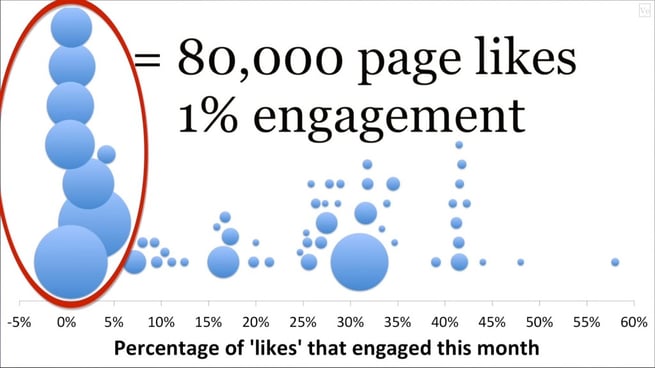Yesterday we started our series on deconstructing the Veritasium video regarding fake likes being provided by Facebook advertising. We started by taking a closer look at Derek Muller's first example, Virtual Bagel. Today, we're going to delve into the second example from the Veritasium video, that being Derek's Veritasium page on Facebook for his YouTube channel. Derek spent $50 AUD on Facebook ads (which Facebook offered him for free in a promotion) and has encountered numerous problems since then.
So, in part one, where we examined Virtual Bagel, we pointed out how important it is to target your ads by location, interests, etc in a way that ensures you'll reach an audience that will be interested in what you have to say.
That targeting is also important for helping you avoid countries where click farms and fake accounts are most active. Now, Derek didn't specify how he targeted his ads, or if he targeted them at all, but from his results it's quite clear that he either didn't target, or that he made the same mistake as Virtual Bagel, targeting countries infamous for click farms and fake accounts.
The above graph is a screenshot from Derek's video. It demonstrates the size of his individual audiences (represented by the size of each individual circle, with each circle being a separate country) and how engaged they are (represented by how far down the right side of the graph they are, ranging from zero on the left to 60% on the right). The countries he's circled in red on the far left are (starting from the bottom and working our way up) Egypt, India, Philippines, Pakistan, Bangladesh, Indonesia, Nepal, and Sri Lanka.
Also according to Derek's graph, together these countries make up 80,000 of the Veritasium Facebook page's likes, and by his own estimate 75% of his current Facebook likes at the time his last video was produced. However, while those countries make up the majority of his Facebook audience, they only account for around 1% of the total engagement on his page.
This happened because Derek's ads were not properly targeted at his ideal audience, and so rather than finding fewer, more expensive new fans who would actually care about and engage with his content, he ended up with loads of cheap likes from these 8 countries, but no value from those likes, because they don't engage. Unfortunately, rather than building an audience as he had intended, Derek built a vanity metric.
So What Can You Do To Avoid Derek's Mistake?
1. Understand your existing audience. What common interests do they share besides you? What is the average gender and age of your followers? Are you a local brand that only wants to reach local people, or does a national or even international following suit you better? Understanding these things are essential for the next step.
2. Target your audience. Now that you know what interests, age, gender, and locations to target, make sure your ads are targeted to those people. It will be more expensive up front, but trust me, those fake likes will cost you more in the long run. Pay up now to properly build a community that will be valuable to you later.
3. Avoid click farms and fake accounts. Unless you have a very good reason to think you need to target any of the countries that Derek mentioned were making up 75% of his fan base at the time of his last video, but less than 1% of his engagement, avoid targeting those countries. Rory Cellan-Jones' Virtual Bagel ad experiment, Derek's own ad experiments, and my personal experience all confirm this to be sound advice.
Join us tomorrow for part 3 of our Facebook Like Fraud Veritasium video series, where we examine Derek's third example, his Virtual Cat ad experiment, an adaptation of Rory Cellan-Jones' Virtual Bagel experiment.
Tags:
Social AdvertisingMar 4, 2014



